 This review is part of the Cameras of the Dead series which features dead cameras that I’ve wanted to review that either didn’t work, or was otherwise unable to shoot.
This review is part of the Cameras of the Dead series which features dead cameras that I’ve wanted to review that either didn’t work, or was otherwise unable to shoot.
This review was originally part of a three camera review published on October 29, 2021 in the 10th edition of the series, but those multi camera reviews don’t index well, so I am separating this into it’s own post to make it easier to find.
This is a Minolta V2, a 35mm rangefinder camera, produced by Chiyoda Kogaku KK starting in 1958. The V2 and the later V3 were high spec rangefinder cameras with a clever shutter design which allowed them to reach previously unreachable speeds of 1/2000 and 1/3000 seconds. Where most leaf shutter cameras are limited to a top speed of 1/500, Chiyoda found a way to angle the shutter blades at the higher speeds, limiting how far they could open to only the smallest apertures while allowing for faster speeds. Other than faster speeds, the V2 and V3 were pretty run of the mill mechanical rangefinder cameras.
Film Type: 135 (35mm)
Lens: 45mm f/2 Minolta Rokkor-PF coated 6-elements in 5-groups
Focus: 0.8 meters to Infinity
Viewfinder: Combined Coincident Image Coupled Rangefinder with Automatic Parallax Correction
Shutter: Citizen Optiper HS
Speeds: B, 1 – 1/2000
Exposure Meter: None
Battery: None
Flash Mount: Cold Shoe with MX Flash Sync
Weight: 784 grams
Manual: https://www.cameramanuals.org/minolta_pdf/minolta_v2.pdf
Hey look, another Japanese leaf shutter rangefinder….yawn!
I have to imagine that was the consensus of many people by the late 1950s as hundreds of different models from dozens of Japanese camera makers filled the shelves of the local camera shops. That’s not to say these were yawn inducing cameras as most models from that era were pretty good. Canon, Olympus, Minolta, Konica, Riken, Petri, Fuji, Kowa, Mamiya, Taron, and Yashica all produced quality cameras with great lenses and some kind of Seiko, Citizen, or Copal leaf shutter, usually covering speeds 1 second to 1/500.
Although focal plane shutter cameras of the era regularly hit 1/1000 with some knocking on the door of 1/2000, it was rare to see a leaf shutter go beyond 1/500, but that was OK because as a consolation, they were flash synchronized at all speeds.
Minolta, actually Chiyoda Kogaku then, was one of the first camera makers to really push the boundaries of the 1/500 leaf shutter limit when they used a high speed shutter developed by Citizen that went not just one, but two stops faster than the 1/500 limit. In order to make a leaf shutter go faster, you either need to make the blades go faster or you need to get creative by not opening it all the way.
The latter is the method used by Citizen in the Optiper HS shutter. Normally, leaf shutters have to completely open before they can begin closing, which is why they are always flash synced at all speeds since there is always a moment when all the light can pass through the lens. But with the Optiper HS, a clever design element caused them to pivot on their axis, which when they would fire, would cause more overlap, reducing the amount of time the shutter let light through. The shutter still technically opens all the way, but the amount of overlap limits the maximum aperture of the lens, meaning you cannot shoot the camera with the lens wide open. You can either have a 1/2000 shutter speed, or you can have a shutter that allows you to shoot wide open, but not both.
When it went on sale in 1958, the Minolta V2 generated quite a bit of buzz as it was the first 35mm camera of any kind, leaf or focal plane shutter, to have a 1/2000 top speed, beating Konica with the F and Canon with the Canonflex R2000 by over a year. Each of the two previews from both Popular and Modern Photography cover the fast shutter, with the Modern article showing an illustration of how the blades work to achieve the highest speeds.
When it went on sale, the Minolta V2 carried a retail price of $99.95 which was quite a bargain considering features like a high quality 6-element Rokkor f/2 lens, automatic parallax correction, rapid film advance, and what Minolta claimed to be the first camera with an LVS that goes to 20. This price when adjusted for inflation compares to around $940 today.
Putting aside the shutter, the Minolta V2 worked and functioned like most other Japanese rangefinders of the day. The top plate had a familiar rewind knob with folding crank, there was a hot shot, a film advance lever, and cable threaded shutter release.
Around back was a film reminder dial and the opening for the viewfinder, and on the bottom was a 1/4″ tripod socket and rewind release button.
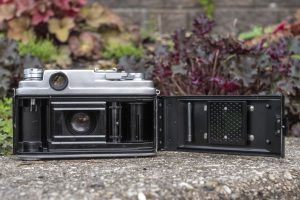
Loading film is also just like most other cameras. Lift up on the door release on the camera’s left side, and the right hinged door swings open. Film transport is from left to right onto a single slotted take up spool. The metal film pressure plate has large dimples to help reduce friction as film passes over it.
The controls for the Minolta V2 are much like that of many other leaf shutter cameras. The focus ring is nearest the body with an aperture and shutter speed ring sandwiching a rectangular window showing EV numbers. Like many cameras of the era turning one ring moves the other to maintain an appropriate exposure value, but unlike other cameras in which selecting a different combination requires contorting your fingers to release some kind of lock, on the V2, its easy to override by simply holding one ring from moving while turning the other.

By far, the most interesting thing of the shutter’s controls are the short blue, and even shorter red lines next to the EV numbers. These lines indicate the range of f/stops that can be used with the shutter’s 1/1000 and 1/2000 speeds. The blue line corresponds with 1/1000 and allows you to choose f/4 through f/22, and the red line corresponds to 1/2000 and allows you to choose f/8 through f/22. This is a side effect of how Citizen was able to achieve such high speeds, as by not requiring the blades to fully open to f/2, they can begin closing faster than otherwise possible.
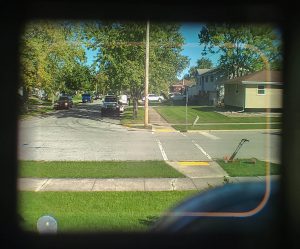
The Minolta V2 has a good, but ordinary viewfinder featuring projected frame lines with automatic parallax correction and a rectangular rangefinder patch. On this example, the rangefinder patch was very difficult to see, which is likely a result of age. Most likely when this camera was new, it would have had much more contrast.
Unfortunately, I did not get a chance to shoot the Minolta V2. Actually, I have two of them and neither work. I’ve been sitting on these cameras both since 2018 hoping that one day a working example would come my way, and that hasn’t happened yet. That’s not to say I couldn’t just go on eBay and buy a third one and hope for the best, I just never did it.

The good news is I’ve shot enough 1950s Minolta cameras to know that the results likely would have been very good. The 6-element 45mm f/2 Minolta Rokkor-PF lens looks to be the same one as on the Minolta AL which I did shoot and the images turned out great.
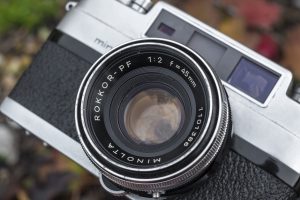
There is no doubt in my mind that anyone willing to plunk down a C-note for one of these cameras back in 1958 would have been thrilled with it’s excellent lens, fast shutter, and ergonomics. I can’t say with any level of certainty that just because I am 0 for 2 with the Minolta V2, that it is more or less reliable than other cameras of it’s era.
I am certain that at least a few people who will eventually read this review will have a working one in their collection and tell me it is a good camera worth seeking out, and I am sure I would be saying the same thing if I had a working one.
But I don’t. Instead, I have two dead Minolta V2s and it’s time for me to move on.
If you want to read a review for the Minolta V2 by someone whose actually shot one, check out this excellent write-up by James Tocchio at casualphotophile.
Related Posts You Might Enjoy
External Links
http://camera-wiki.org/wiki/Minolta_V2
https://casualphotophile.com/2019/11/25/minolta-v2/
https://ilottvintage.com/cameras/minolta-v2
https://www.35mmc.com/15/10/2020/5-frames-with-a-minolta-v2-kodak-portra-400-by-nigel-haycock/
https://www.photo.net/discuss/threads/minolta-v2-rocketship.380143/

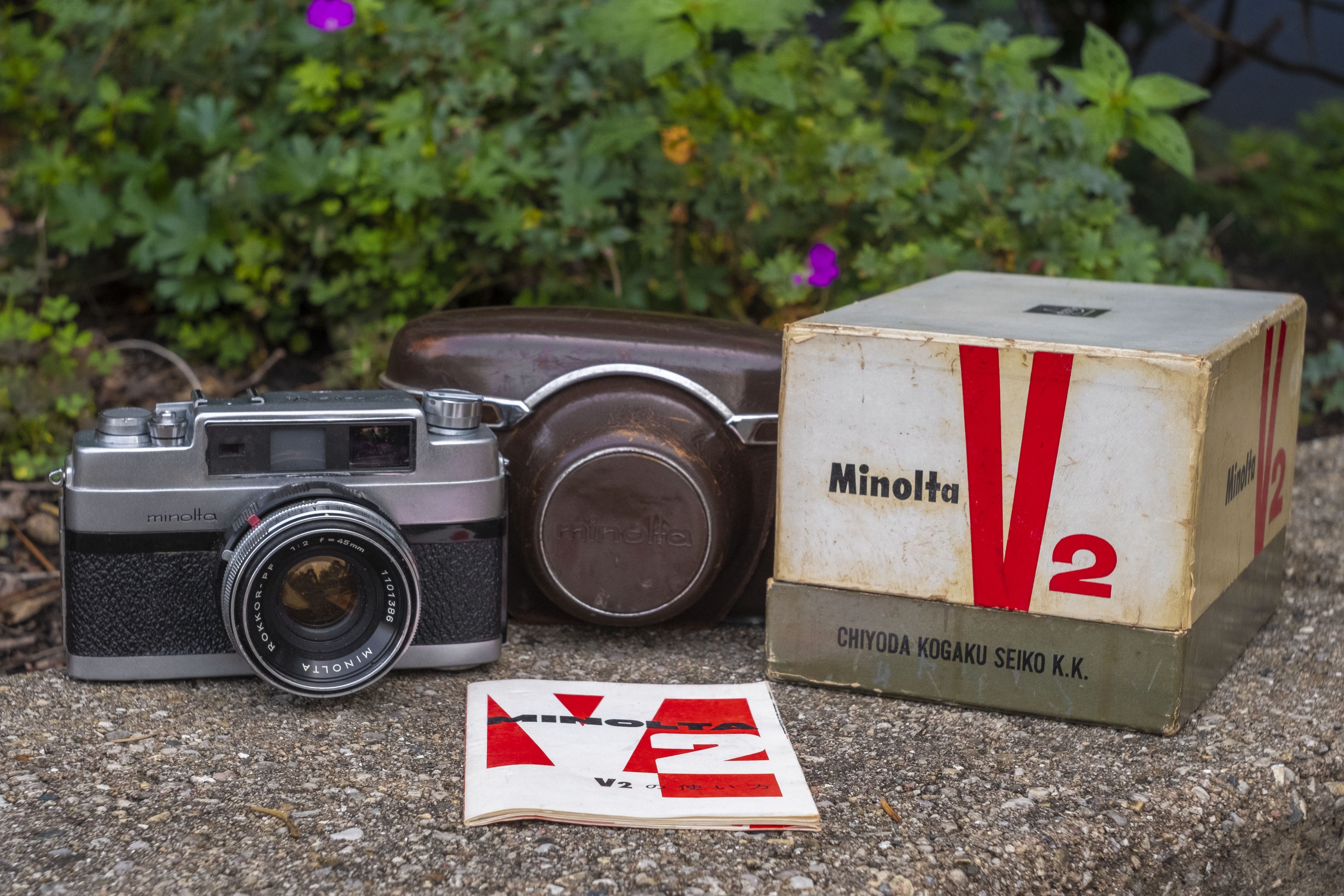
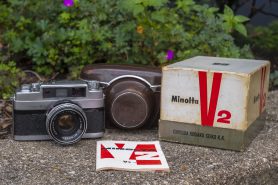
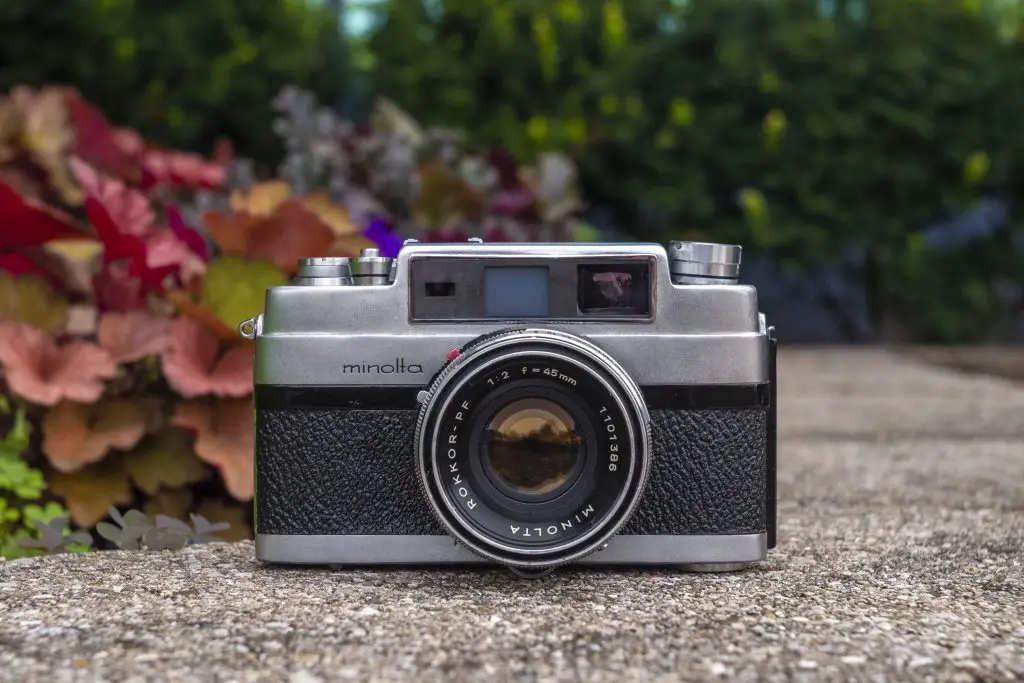
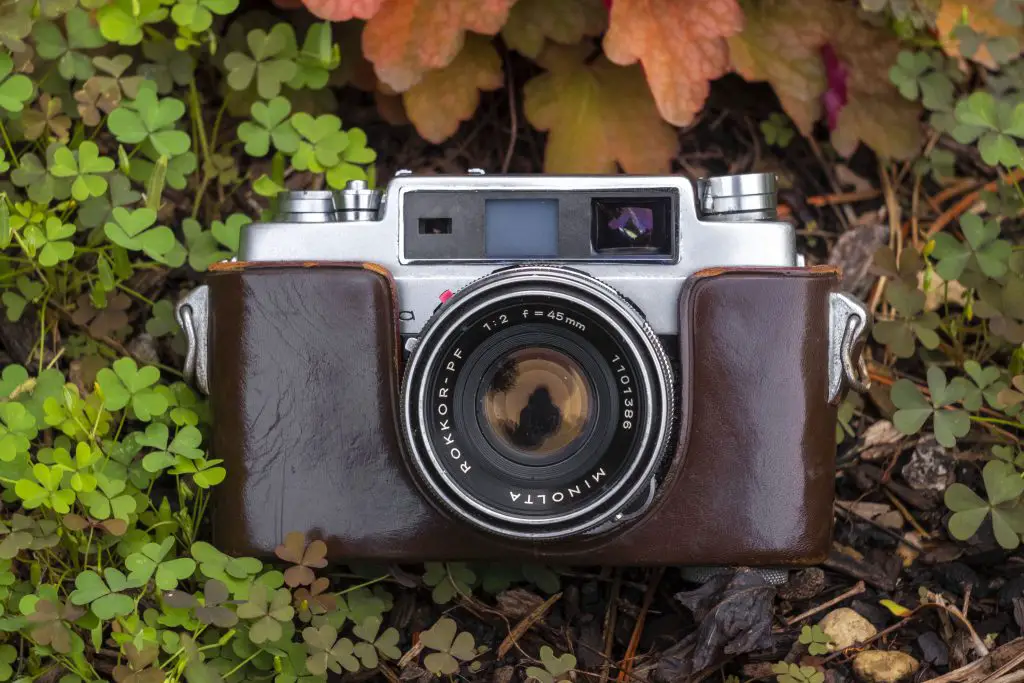
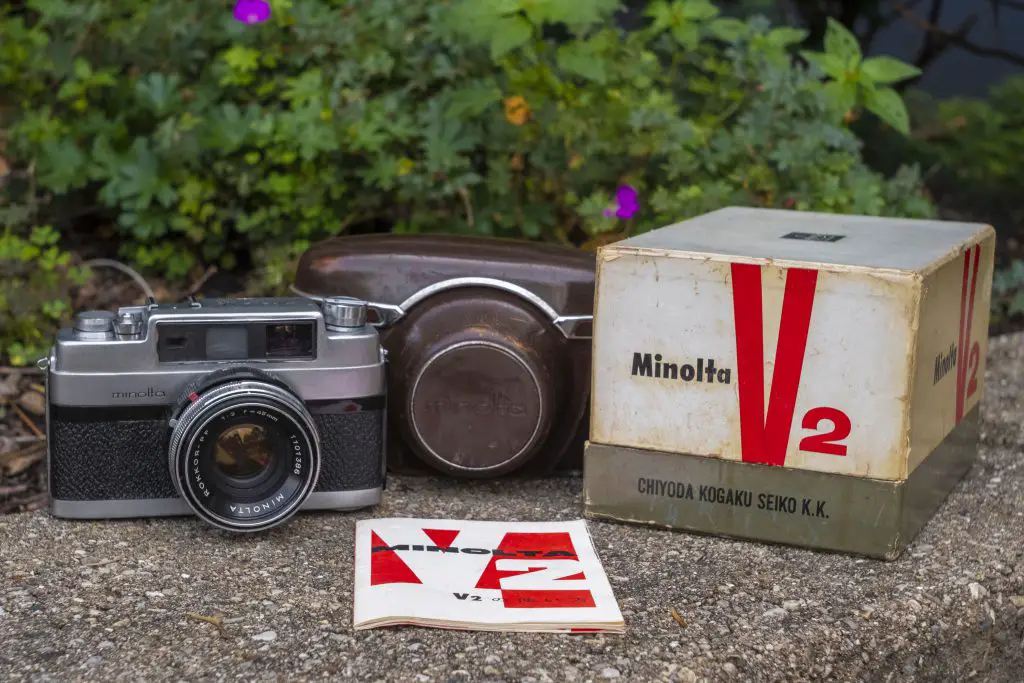
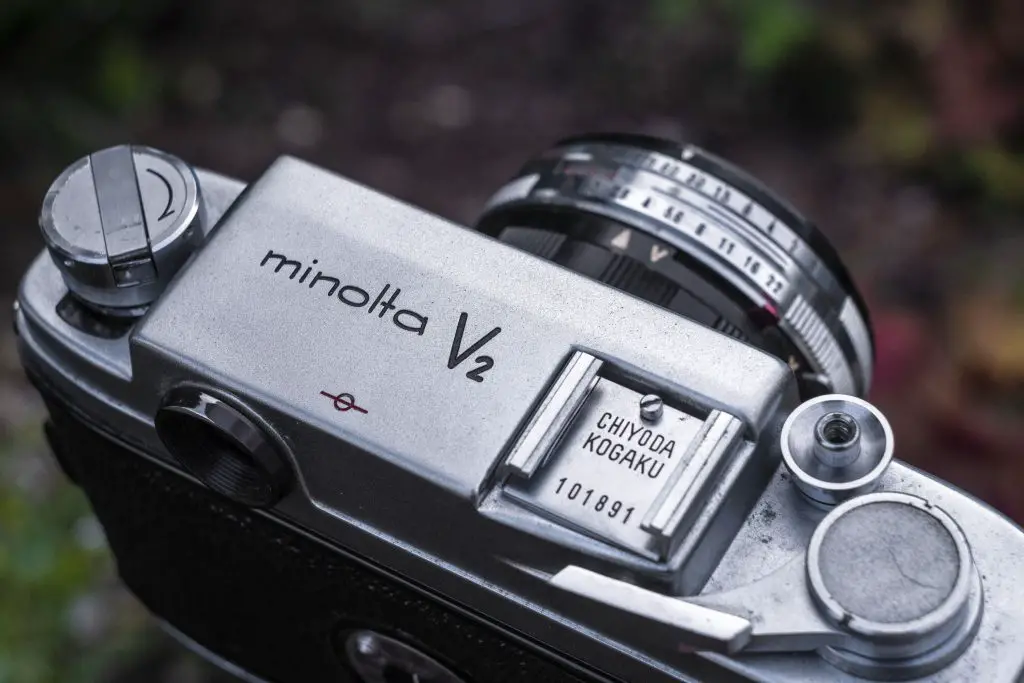
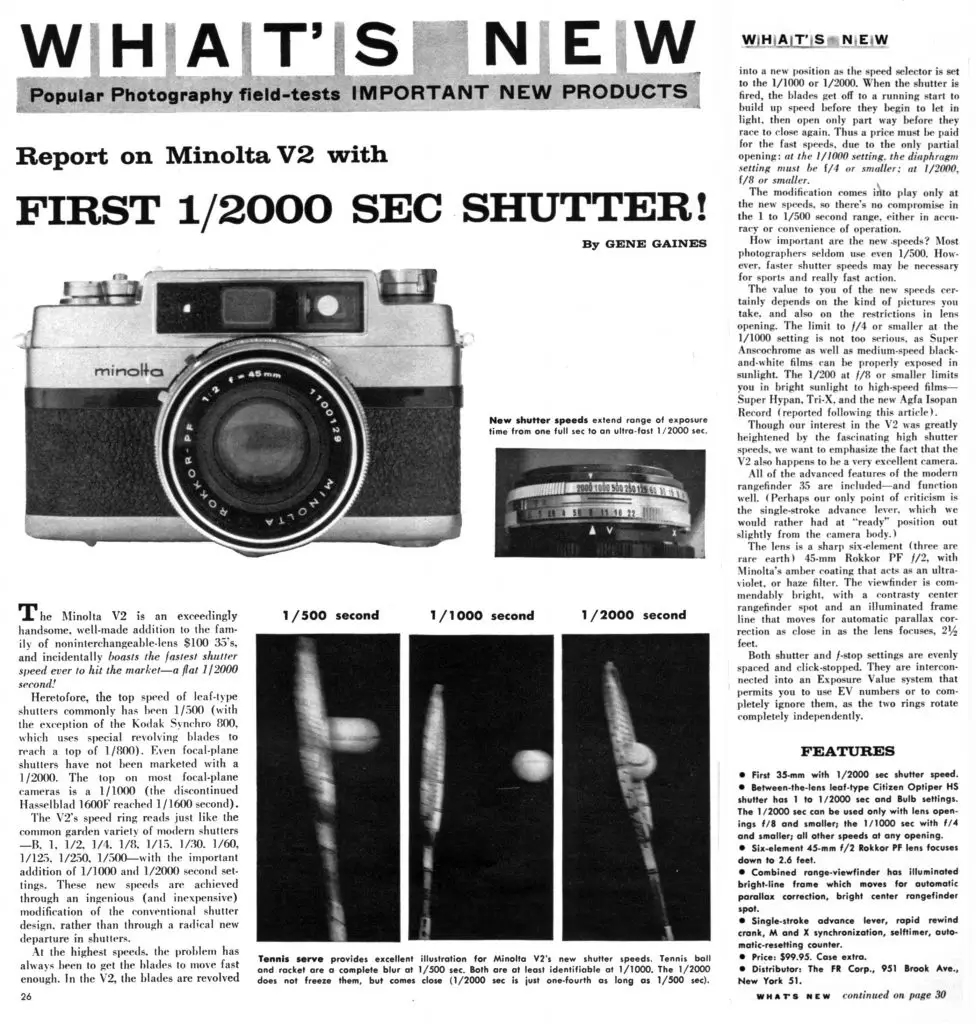
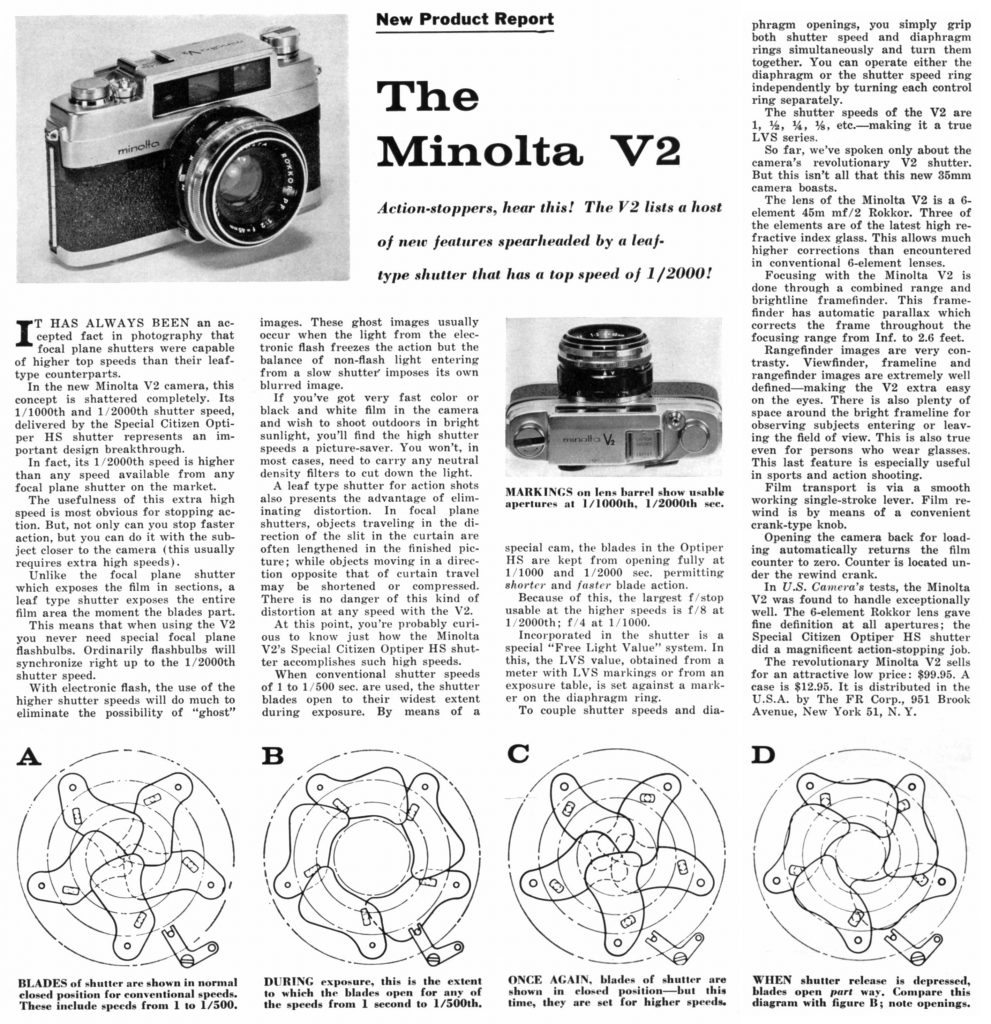
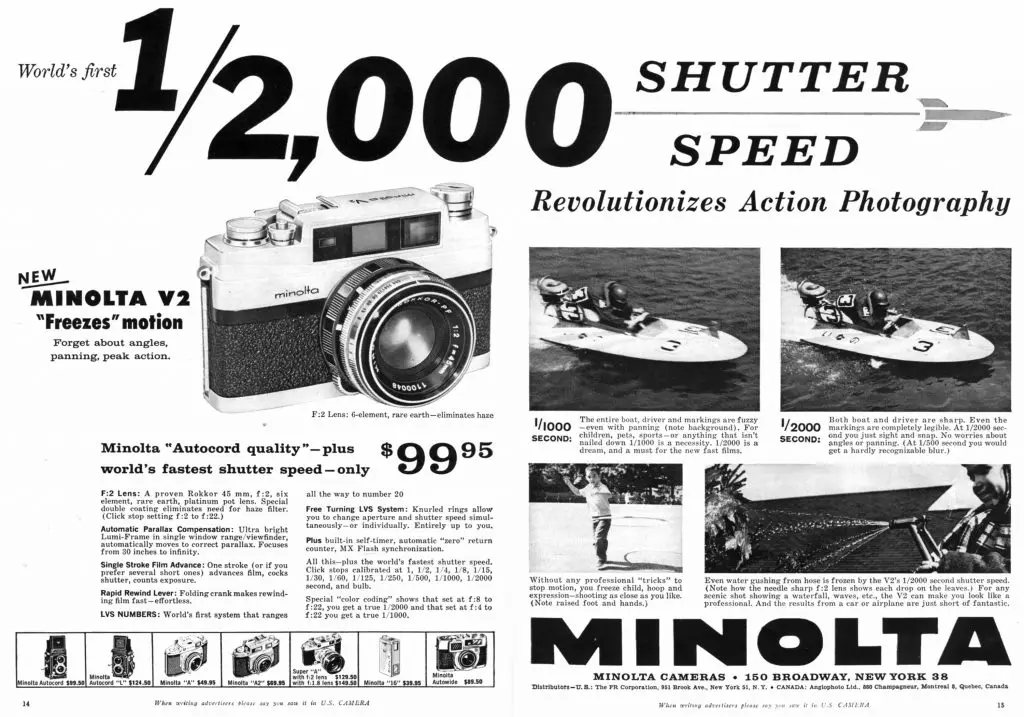
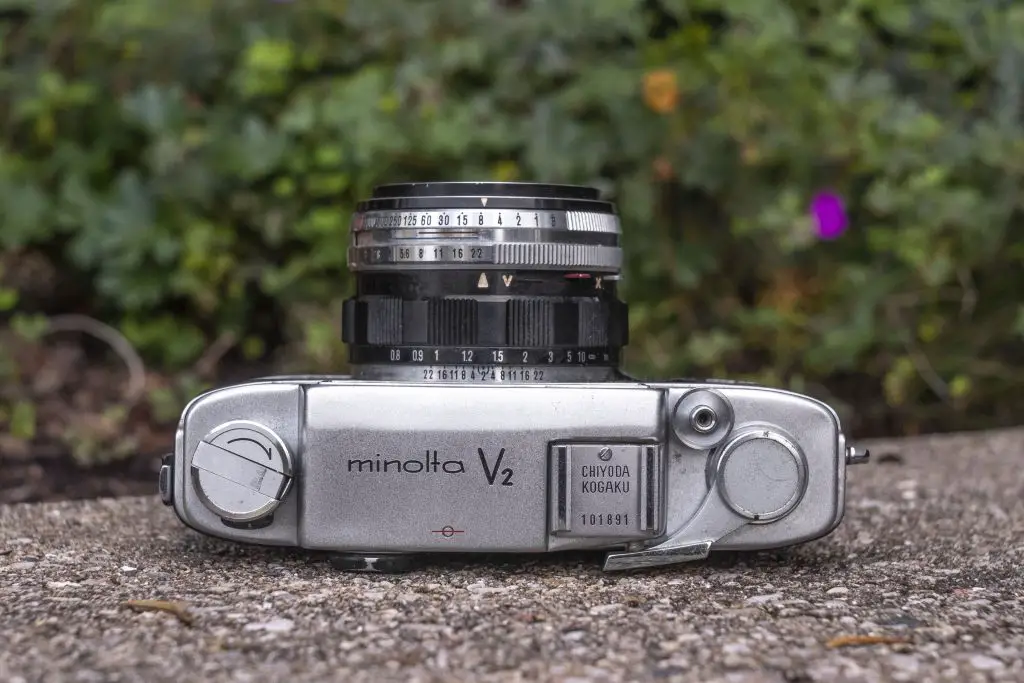
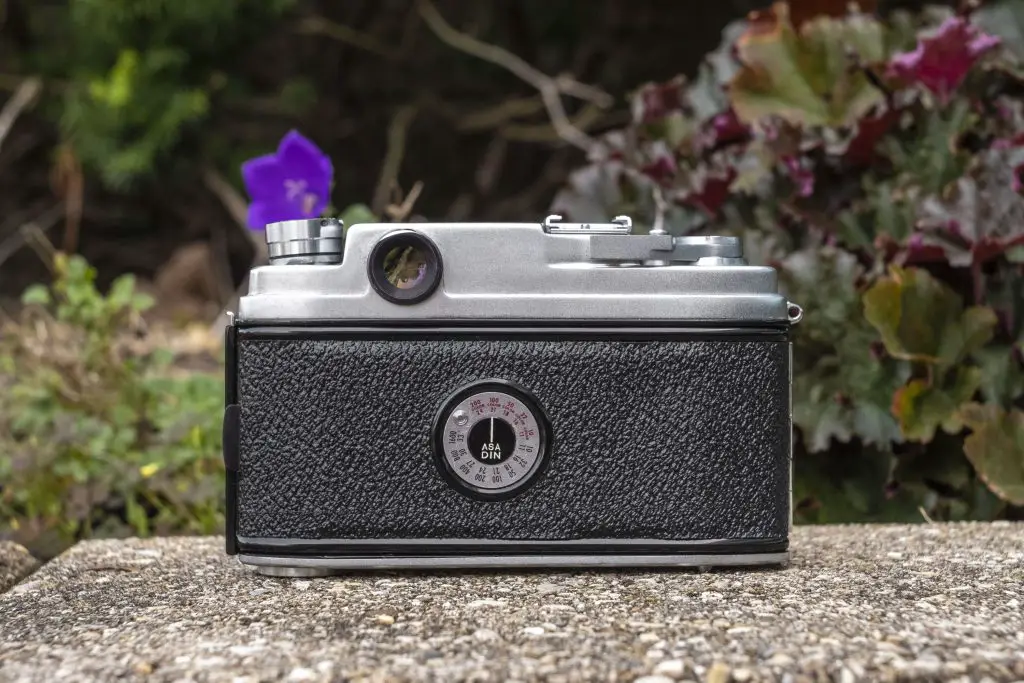
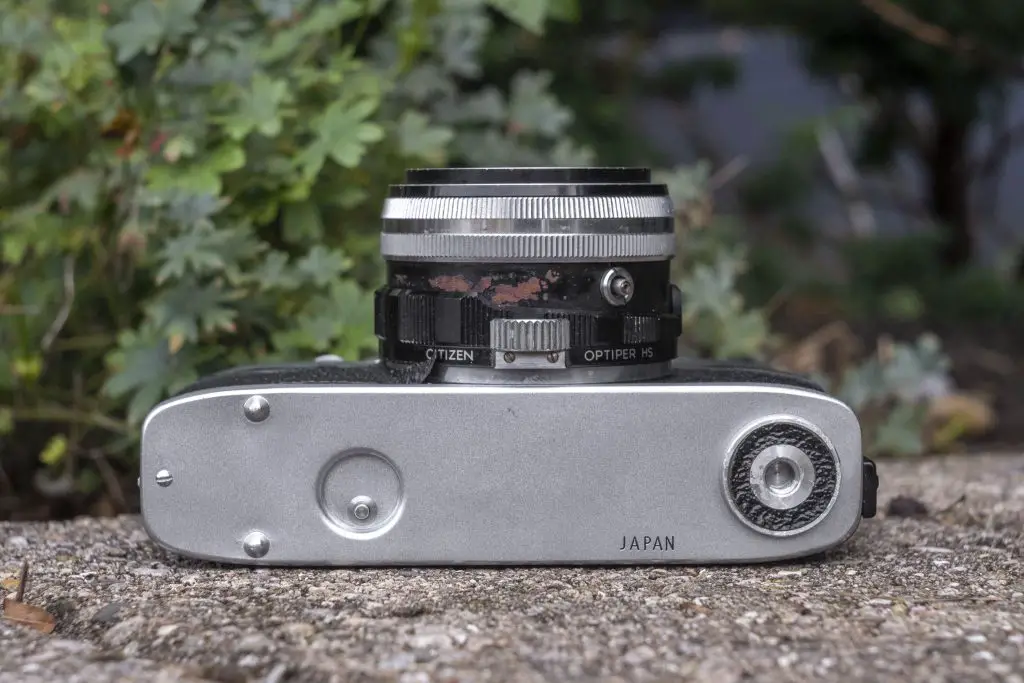
Nice review, as usual. I’ve had and sold the V2 in working condition. I now have the V3 in fully working condition (but I haven’t shot it yet). It is built like a solid block of steel. I got both of mine from Jeff Guthrie at Japan Vintage Camera, and I would recommend him to anyone who wants a vintage Japanese camera that is fully restored and functional, at a great price (with free worldwide shipping). These 1950s Minoltas are solidly built with great lenses. I also have the Minolta 35 IIB, which is beautiful and uses LTM/M39 mount lenses. I would recommend any of these to your readers. Keep up your great reviews, I love reading them!
Glad you liked it! I really wanted to shoot this camera as, like you, I found it to be really nicely built and designed. Unfortunately after having back to back dead cameras, I didn’t want to keep trying and go for a third, but rather than not let this camera have it’s “time in the spotlight” I decided to give it a dead camera review! Thanks for the kind words though and I hope you keep reading the site as I have more reviews planned for 2022!
Hello Mike!
Thanks for your review, a few weeks ago I decided to buy a V2. Now It is sitting on my desk in great condition all cleaned and repaired.
I have taken 4 rolls with it, and guess what, the outcomes are awesome as you predicted. Regardless of what film I use (Gold 200 / Colormax 200 / Superia Xtra 400 / Fujicolor 200), outcomes are highly detailed with fine texture, at the same time juicy and lively shown.
The 1/2000 shutter can easily freeze water droplets and birds taking flight, creating some interesting shots not so often seen on film photography. Bokeh effects on V2 are awesome too. I would say it creates one of the most natural bokeh shots I have seen see on vintage rangefinger cameras.
I have collected many 50-70s rangefingers made by Yashica, Konica, Olympus, Canon, Mamiya, Ricoh, Fujica, Taron and Walz. I would say that Minolta V2 stands as one of the top.
Great review and great machine.
Very cool Michael! Thanks for the compliments and that you got a nice working one. Interestingly, I recently picked up another V2 and a V3, both of which work perfectly. Although I’ve already reviewed the V2, I definitely want to give it a go, and try out that V3 with it’s top 1/3000 shutter speed! 🙂
That’s awesome! Hope you’ll write a review on V3 and share your experiences on both of them! I will certainly be your reader